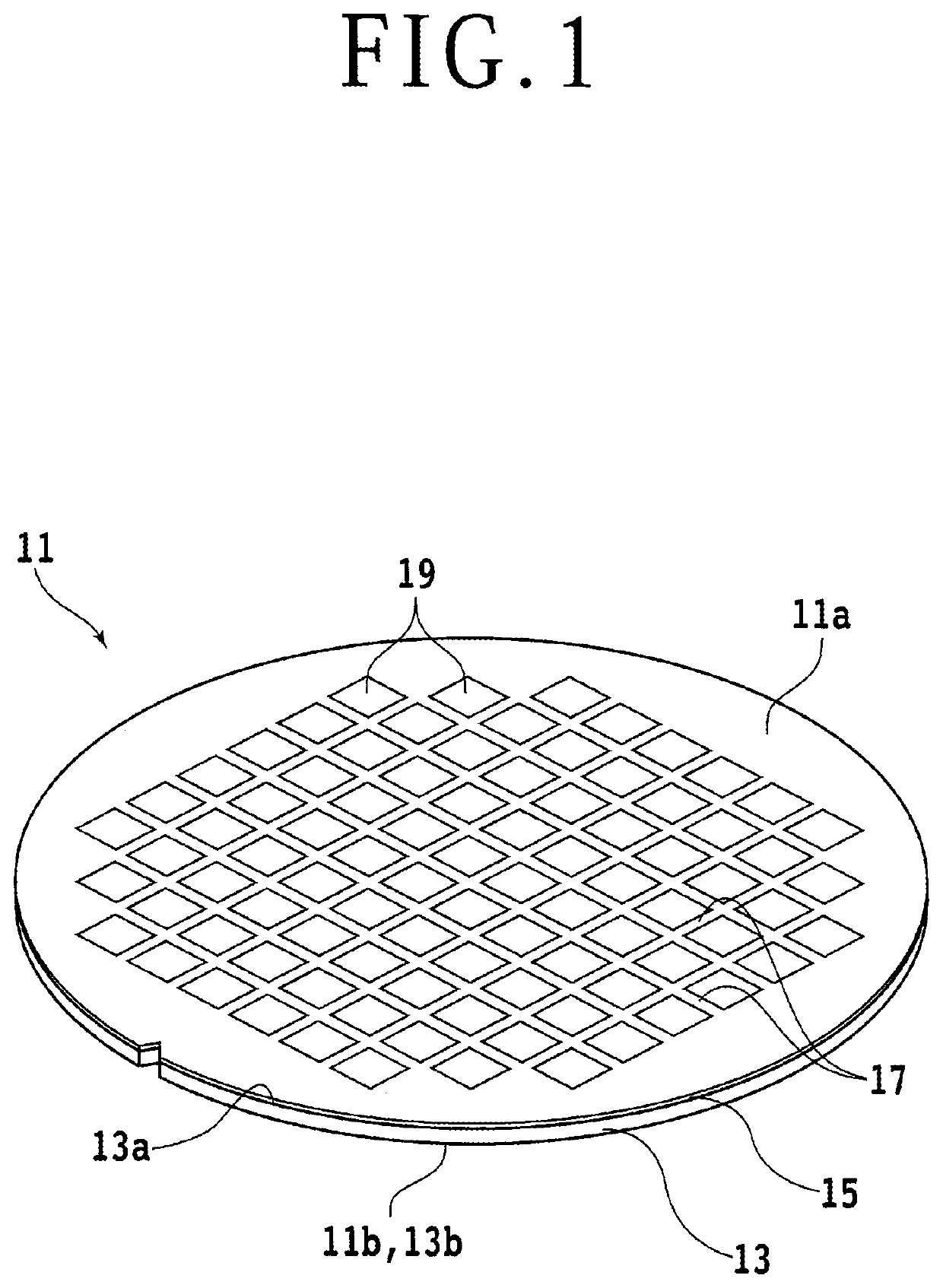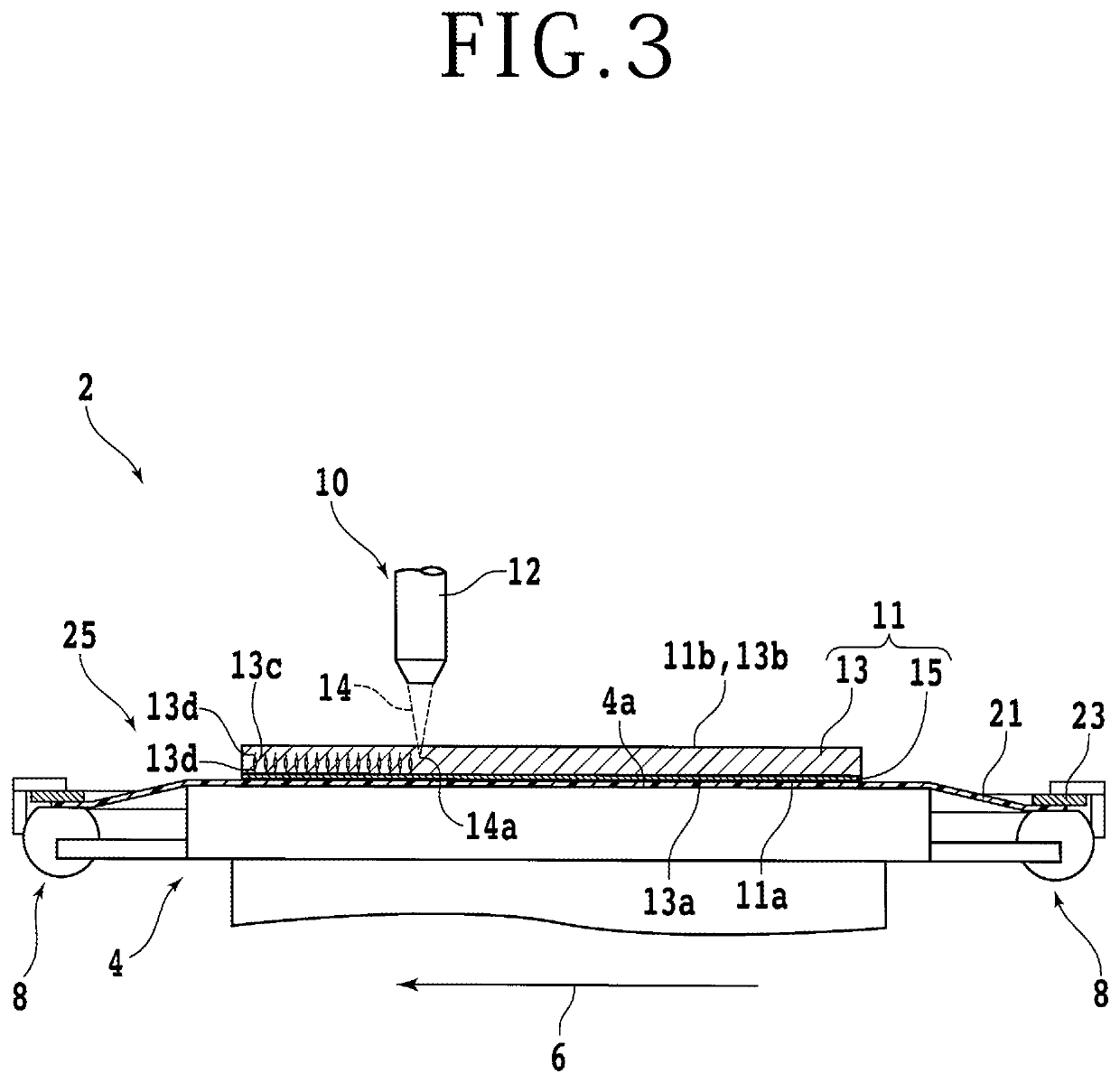Chip manufacturing method
a manufacturing method and chip technology, applied in the direction of manufacturing tools, solid-state devices, laser beam welding apparatus, etc., can solve the problems of processing defect and partial substrate orientation, and achieve the effect of reliably dividing the wafer, suppressing abnormal cracking, and reducing the number of times of inverting the wafer upside down
- Summary
- Abstract
- Description
- Claims
- Application Information
AI Technical Summary
Benefits of technology
Problems solved by technology
Method used
Image
Examples
first embodiment
[0037]Description will next be made of a method of manufacturing a plurality of device chips (chips) 35 (see FIG. 9A and the like) by dividing the wafer 11 into units of the devices 19. FIG. 2 is a flowchart of a method of manufacturing the device chips 35 according to a First, a first protective tape 21 is affixed to the laminate 15 side of the wafer 11 (that is, a front surface 11a of the wafer 11) and one surface of an annular frame 23 (see FIG. 3) made of metal which annular frame has an opening portion of a diameter larger than that of the wafer 11 (tape affixing step S10).
[0038]In the present example, a wafer unit 25 is formed in which the wafer 11 is thus supported by the annular frame 23 via the first protective tape 21. However, the annular frame 23 is not essential. The first protective tape 21 having substantially the same diameter as that of the wafer 11 may be affixed to the front surface 11a side. The first protective tape 21 is, for example, a resin-made film in whic...
second embodiment
[0082](Second Embodiment) A second embodiment will next be described. FIG. 12 is a flowchart of a method of manufacturing device chips 35 according to the As depicted in FIG. 13, the laser-processed groove forming step S70 according to the second embodiment forms a laser-processed groove 15a4 having a predetermined depth such that the laminate 15 is not severed completely. FIG. 13 is an enlarged sectional view of the wafer 11, the enlarged sectional view depicting one laser-processed groove 15a4 not reaching the front surface 13a of the substrate 13. The laser-processed groove 15a4 can be formed by, for example, decreasing average power and repetition frequency, increasing processing feed speed, or changing the height position of the condensing point 50a. Damage to the front surface 13a side of the substrate 13 in the laser-processed groove forming step S70 can be reduced by forming the laser-processed groove 15a4 not reaching the front surface 13a.
[0083]In the second embodiment, ...
PUM
 Login to View More
Login to View More Abstract
Description
Claims
Application Information
 Login to View More
Login to View More - R&D
- Intellectual Property
- Life Sciences
- Materials
- Tech Scout
- Unparalleled Data Quality
- Higher Quality Content
- 60% Fewer Hallucinations
Browse by: Latest US Patents, China's latest patents, Technical Efficacy Thesaurus, Application Domain, Technology Topic, Popular Technical Reports.
© 2025 PatSnap. All rights reserved.Legal|Privacy policy|Modern Slavery Act Transparency Statement|Sitemap|About US| Contact US: help@patsnap.com



